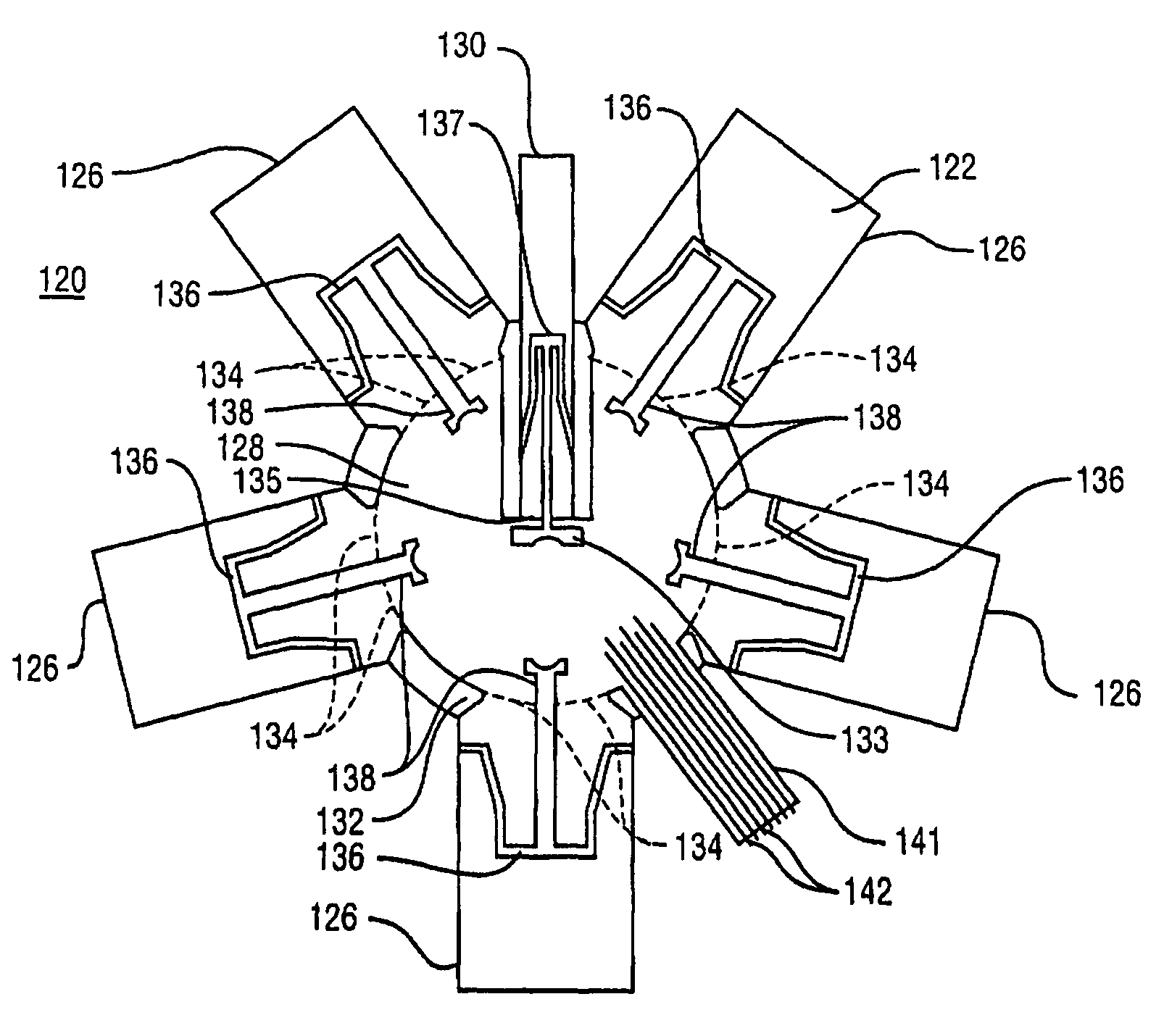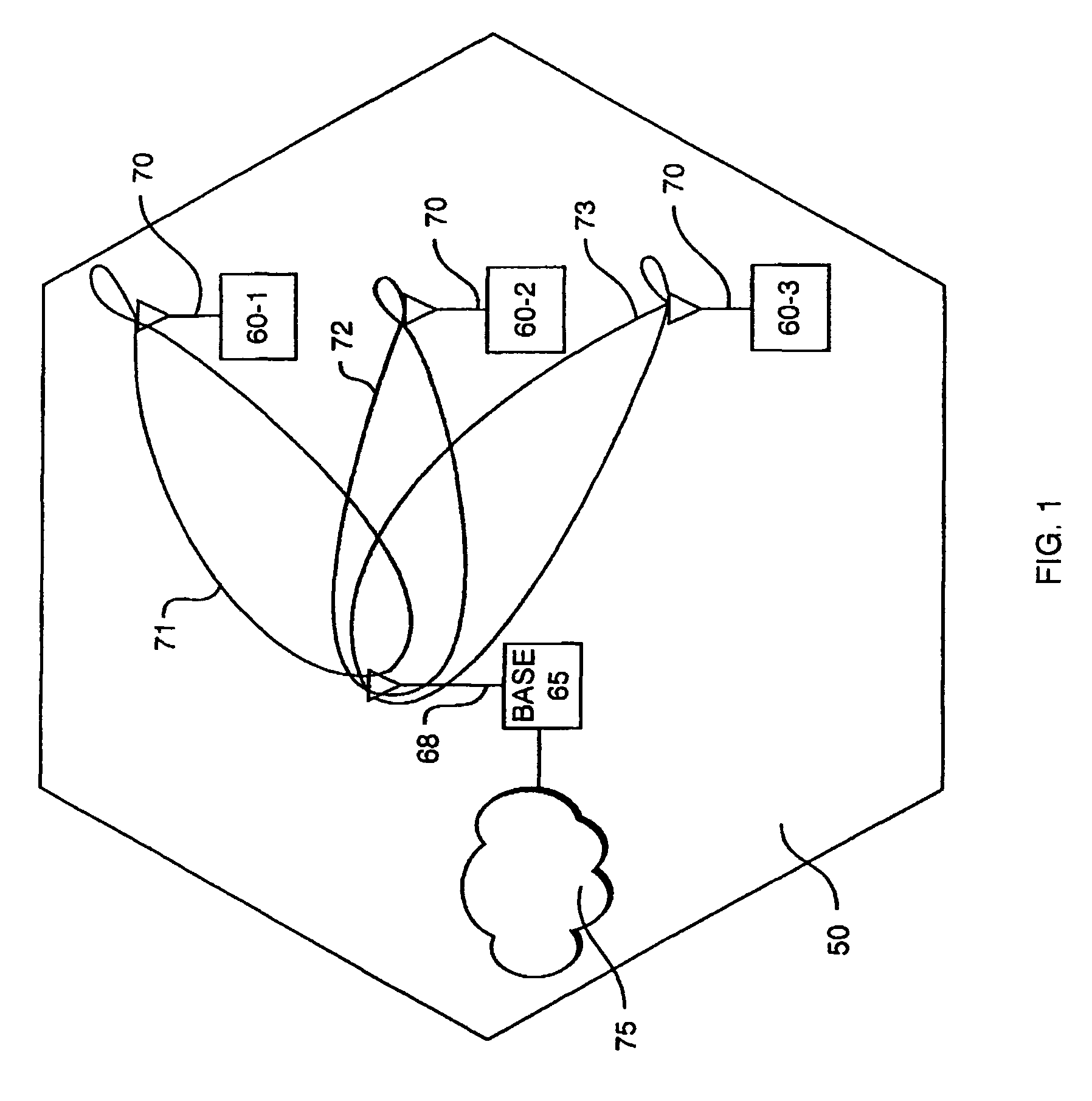Folding directional antenna
a directional antenna and antenna array technology, applied in the field of compact configurable antenna apparatus, can solve the problems of multi-path fading, radio frequency signal transmitted from a sender (either a base station or mobile subscriber unit) may encounter interference, fade or dropout of the received signal,
- Summary
- Abstract
- Description
- Claims
- Application Information
AI Technical Summary
Benefits of technology
Problems solved by technology
Method used
Image
Examples
Embodiment Construction
[0033]FIG. 1 illustrates one cell 50 of a typical CDMA cellular communication system. The cell 50 represents a geographical area in which mobile subscriber units 60-1 through 60-3 communicate with a base station 65. Each subscriber unit 60 is equipped with an antenna 70, which may be constructed according to the present invention. The subscriber units 60 are provided with wireless data and / or voice services by the system operator, through which devices such as, for example, laptop computers, portable computers, personal digital assistants (PDAs) or the like can be connected to the base station 65 (including the antenna 68) to a network 75, which can be the public switched telephone network (PSTN), a packet switched computer network (such as the Internet) a public data network or a private network. The base station 65 communicates with the network 75 over any number of different available communications protocols such as primary rate ISDN, or other LAPD based protocols such as IS-634...
PUM
 Login to View More
Login to View More Abstract
Description
Claims
Application Information
 Login to View More
Login to View More - R&D
- Intellectual Property
- Life Sciences
- Materials
- Tech Scout
- Unparalleled Data Quality
- Higher Quality Content
- 60% Fewer Hallucinations
Browse by: Latest US Patents, China's latest patents, Technical Efficacy Thesaurus, Application Domain, Technology Topic, Popular Technical Reports.
© 2025 PatSnap. All rights reserved.Legal|Privacy policy|Modern Slavery Act Transparency Statement|Sitemap|About US| Contact US: help@patsnap.com



